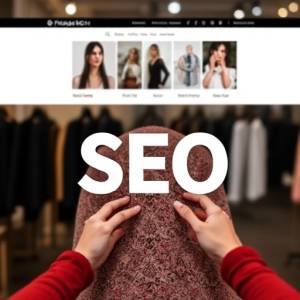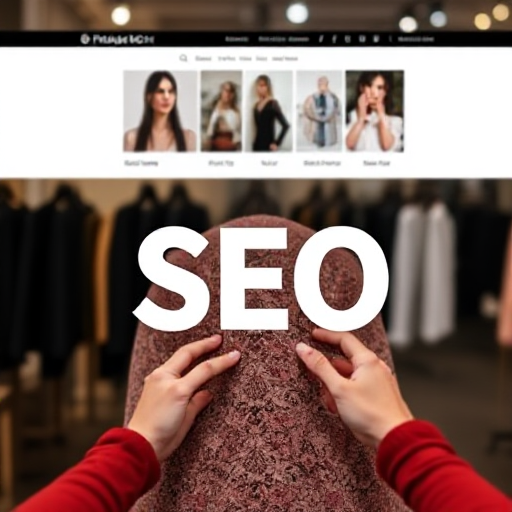
In the competitive world of fashion e-commerce and online presence, having a strong SEO (Search Engine Optimization) strategy is vital for visibility, customer acquisition, and ultimately business growth. SEO for fashion websites is an essential aspect of digital marketing, designed to ensure that a website ranks high in search engines and attracts organic traffic. This article will walk you through the importance of SEO for fashion websites, key strategies for optimizing a fashion website, and best practices to help you improve visibility and increase conversions.
Why SEO is Important for Fashion Websites
Fashion is a highly visual and trend-sensitive industry, making it challenging to stand out. SEO can significantly improve a fashion website’s ranking on search engine results pages (SERPs), driving organic traffic and boosting brand recognition. With the rise of mobile shopping and social media, consumers are increasingly looking for fashion brands online. SEO helps ensure that your fashion website is discoverable by users who are actively searching for products or information related to your niche.
Key benefits of SEO for fashion websites:
- Increased organic traffic: By ranking higher in search engine results, your website can attract more visitors without the need for expensive paid advertising.
- Better user experience: SEO techniques often involve optimizing site structure, speed, and usability, which creates a better experience for visitors.
- Improved brand visibility and credibility: Websites that rank high on SERPs are often perceived as more trustworthy and reputable.
- Higher conversion rates: SEO not only drives traffic but also attracts relevant visitors who are more likely to convert into customers.
- Long-term growth: Unlike paid ads, SEO provides long-term benefits. Once your site ranks well, it can sustain its traffic over time.
Essential SEO Strategies for Fashion Websites
1. Keyword Research
Effective SEO begins with understanding what your target audience is searching for. In the fashion industry, trends and styles change rapidly, so staying up-to-date with relevant keywords is crucial. Keyword research helps identify the terms and phrases consumers use when searching for fashion products, trends, or inspiration.
Tips for fashion keyword research:
- Use tools like Google Keyword Planner, Ahrefs, or SEMrush to find high-traffic keywords with low competition.
- Focus on long-tail keywords like “summer dresses 2025” or “black leather boots for men” to target specific searches.
- Look for seasonal trends and fashion-related terms like “holiday outfit ideas” or “fall fashion trends.”
- Don’t forget about local SEO—keywords like “fashion boutique in New York” can help you target specific geographic locations.
2. On-Page SEO Optimization
On-page SEO involves optimizing the individual pages on your website to improve search rankings. For fashion websites, this includes product pages, blogs, and category pages. Here are key elements to focus on:
- Title Tags and Meta Descriptions: Write clear, concise, and compelling title tags and meta descriptions for each page. These elements tell both users and search engines what your page is about. Make sure to include relevant keywords.
- Header Tags (H1, H2, H3, etc.): Use header tags to organize content and make it more readable. H1 should typically contain the main keyword for the page, while H2 and H3 tags help with subheadings.
- Image Optimization: Fashion websites are highly visual, so optimizing images is crucial. Use descriptive file names and include alt text with relevant keywords. This also helps with accessibility and improving image search results.
- Internal Linking: Link related content and product pages within your site. This improves navigation and helps search engines discover all pages on your website.
- Content Quality: Create high-quality content that speaks to your audience. This can include blog posts on fashion trends, buying guides, or styling tips. Relevant content not only engages visitors but also boosts SEO.
3. Mobile Optimization
A significant portion of fashion-related searches is done via mobile devices. Ensuring that your website is mobile-friendly is no longer optional—it’s essential for SEO.
Mobile optimization tips for fashion websites:
- Use responsive design so your website adapts to different screen sizes.
- Ensure fast loading times on mobile devices, as slow pages can harm rankings.
- Implement mobile-friendly navigation, especially for product categories and checkout processes.
- Ensure that buttons and links are easy to click on mobile devices.
4. Site Speed and Technical SEO
Site speed is an essential ranking factor. Fashion websites with heavy imagery or numerous product pages can often be slow, which can lead to high bounce rates. Improving site speed and technical SEO ensures better user experience and higher rankings.
Steps to improve site speed:
- Compress images and use formats like WebP that maintain quality while reducing file size.
- Minimize HTTP requests by reducing the number of elements on each page.
- Implement browser caching to improve loading times for returning visitors.
- Use a Content Delivery Network (CDN) to serve content faster across different geographic locations.
Other technical SEO factors:
- Use structured data (schema markup) to help search engines understand the content on your site, such as product information, prices, and reviews.
- Ensure that your website has a clean and organized URL structure.
- Fix broken links and redirects to prevent 404 errors.
5. Link Building
Link building is an essential SEO tactic to improve domain authority and search engine rankings. For fashion websites, acquiring backlinks from reputable sources, such as fashion blogs, influencers, and industry websites, can help establish credibility and drive traffic.
Tips for link building in the fashion industry:
- Reach out to fashion bloggers and influencers to collaborate on content or get product reviews.
- Create shareable content such as infographics, lookbooks, or guides that encourage others to link to your website.
- List your site in fashion-related online directories and marketplaces.
- Engage in guest blogging opportunities with well-established fashion platforms.
6. Local SEO for Fashion Stores
If you have a physical store or serve specific regions, local SEO is crucial for attracting nearby customers. Local SEO optimizes your website to show up in search results for users in specific locations.
Local SEO tips for fashion websites:
- Create and optimize your Google My Business listing with accurate business details such as address, hours of operation, and phone number.
- Encourage customers to leave reviews on your Google My Business page and other review platforms.
- Use location-specific keywords (e.g., “luxury fashion in Los Angeles”).
- Create location-specific content, such as events or promotions, to attract local traffic.
7. Social Media and SEO Integration
While social media doesn’t directly impact SEO rankings, it plays a crucial role in driving traffic and building brand awareness. Social signals can indirectly affect your search visibility by driving engagement and increasing the likelihood of backlinks.
Ways to integrate social media and SEO:
- Share blog posts, product pages, and other relevant content on platforms like Instagram, Pinterest, and Facebook.
- Encourage users to share content by adding social sharing buttons to your website.
- Collaborate with influencers and fashion bloggers who can help drive traffic and build backlinks to your website.
8. Content Marketing and Blogging
A blog can be a powerful tool for fashion websites. Content marketing through blogs, articles, and guides can attract organic traffic, improve rankings, and engage visitors.
Effective content marketing strategies for fashion websites:
- Publish blog posts about fashion trends, styling tips, seasonal collections, and behind-the-scenes content.
- Create product guides or how-to articles to educate your audience and provide value.
- Use long-form content to target broad search terms, such as “how to style a leather jacket” or “ultimate guide to fashion accessories.”
- Focus on storytelling to build a deeper connection with your audience.
SEO for fashion websites is an ongoing effort that requires consistent strategy, attention to detail, and a deep understanding of your target audience. By focusing on effective keyword research, optimizing on-page elements, improving site speed, building backlinks, and creating high-quality content, you can improve your website’s visibility, attract more organic traffic, and ultimately increase conversions. Fashion brands that successfully implement SEO will see sustained growth, higher rankings, and stronger customer engagement. Keep in mind that SEO takes time, but the long-term benefits are well worth the investment.
By staying current with SEO trends and continuously optimizing your site, your fashion brand can thrive in the ever-evolving digital landscape.
